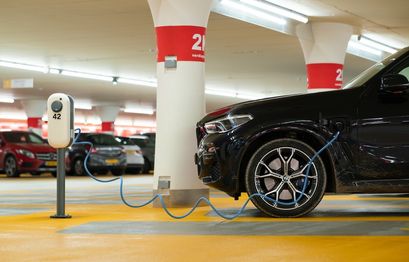
As the world increasingly focuses on reducing carbon emissions and combating climate change, electric car sales and development have seen an intense rise. The industry is booming and will only continue to grow as time goes on.
Below you can find a host of electric car statistics and facts that can shed light on the industry and its development in recent years.
The Top Electric Car Statistics to Know in 2023
In 2022 in the US, 5.8% of all cars sold were electric.
Tesla sold 1.3 million cars in 2022.
EV global market value increased by 22% in 2022, from $170 billion to $208.58 billion.
PHEV sales increased by 19% in Europe in 2022.
The Tesla Model Y was the best-selling car in 2022, with more than 35,000 cars sold.
19% of all cars sold in China in 2022 were EVs.
California is at the very top of EV registrations, housing 38.71% of all EVs in the US in 2021.
In 2022, Tesla held 65% of the EV market share, down from 72% in 2021.
Lack of charging infrastructure and affordability are core barriers to EV adoption.
2.2% of all passenger vehicles on Earth are electric.
General Stats and Facts About Electric Cars
The first ever crude electric vehicle was built in 1832.
Robert Anderson, the vehicle’s creator, was a 19th-century Scottish inventor. This vehicle was a carriage powered by non-rechargeable primary cells.
However, the first practical electric vehicle was built in 1880 by the Scottish chemist William Morrison.
It's interesting to note that the first ever gas engine car was built in 1886 by Carl Benz, a German engineer.
(EnergyGov)
5.8% of all cars sold in the US in 2022 were EVs.
This is especially important when we consider that in the US, overall car sales dropped in 2022, but EV sales have actually increased by 65% when compared to 2021, from 3.1%.
And as always, it needs to be mentioned that Tesla is the market leader, even though its share of the market dropped from 72% in 2021 to 65% in 2022.
(InsideEVs)
Tesla delivered 1.3 million cars in 2022.
This is an increase of 40% when compared to 2021. Production has also increased, by 47%, reaching 1.4 million in 2022.
However, while these numbers, and $24.32 billion in revenue, do show a solid year for Tesla, it's nothing compared to past growth. As an example, sales almost quadrupled between 2019 and 2020, and almost doubled between 2020 and 20201.
(CNN Business)
Tesla held 65% of the EV market share in 2022.
This is a significant drop from the 72% market share the company held in 2021. It is still the undisputed leader of the US electric vehicles market, with Ford holding only 7.6%, and Hydunaia and Kia have a combined 7.1%.
However, the drop shows that slowly, its competitors are gaining ground. As an example, Rivian’s 2.6% market share may not seem like much, but it is a significant achievement for a fresh company making its foray into the market.
(InsideEVs)
The number of publicly available electric vehicle charging stations increased by 40% in 2021.
There were roughly 1.8 million publically available charging points in 2021. Of this number, a total of 500,000 were installed in 2021.
When looking at specific countries, China is easily the global leader, housing 85% of the world’s fast chargers and 55% of the slow chargers. In fact, fast chargers make up 40% of all EV charge stations in the country.
Most of this growth is driven by government subsidies and aggressive infrastructure development within China, all pushing for stronger public utility development.
(International Energy Agency)
EVs perform better when it comes to power, acceleration, and torque.
Now, of course, it does depend heavily on the car model. Still, the idea that the performance of electric cars is poor is unfounded.
As an example, the Tesla Model X beat an Alfa Romeo 4C in a drag race. Tesla Model S acceleration is also legendary, reaching zero to sixty in less than two seconds.
(Pod Point)
The Tesla Model Y was the best-selling EV in 2022, with 35,551 units sold.
While two Tesla cars are at the very top of top-selling electric cars, the rest of the list might surprise you. In order of sales, the best-selling EVs of 2022 are:
Tesla Model Y, with 35,551 units sold
Tesla Model 3, with 19,071
Kia e-Niro with 11,197
Volkswagen ID.3, with 9,832
Nissan Leaf, with 9,178
(HeyCar)
In the first quarter of 2022 alone, there were 158,600 new EV car registrations filed in the US.
This is a 60% increase and a new record. In fact, electric car statistics show that in 2022 alone, companies had around 442,000 electric vehicles manufactured.
As a comparison, in the last 12 years, a total of roughly 2,500,000 EVs have been sold.
(8 Billion Trees)
The global market value of EVs grew by 22% in 2022, reaching $208.58 billion.
This is a substantial increase when we look at the $170 global value in 2021. One of the core growth drivers behind this increase is government support.
For example, China and the US are providing incentives to help the sale of EVs, while California plans to stop producing gasoline-powered cars by the end of 2023. Costa Rica, Sri Lanka, and more than 15 other nations have also made plans to completely ban internal combustion engine cars in the next one to three decades.
(AlterEnergyMag)
Globally, 7.8 million electric cars were sold in 2022.
The 7.8 million sales represent a significant 68% increase when we look at 2021. This is the first time the EV market reached a record-breaking 10% of the global automotive industry market share.
What makes this 10% market share an especially important achievement are the predictions made in the past. Former analysis and electric vehicle statistics predicted the EV market will reach a 10% market share no sooner than 2030.
(Business Insider)
Hybrids Are Not Going Anywhere
2022 saw a 19% increase in PHEV sales in Europe.
While global EV sales increased between 15% and 17%, plug-in electric vehicle sales saw a substantial increase in Europe.
Namely, a total of 175,000 new battery-powered electric vehicle registrations were noted in 2022, a 31% increase compared to the previous year. For plug-in hybrids, 106,000 new registrations were claimed.
In total, this was a 27.7% increase in electric cars, with a total of 281,505 new registrations.
(InsideEVs)
Globally, 2 million hybrid cars have been sold in the first nine months of 2022.
Despite the strong development of fully electric BEV cars, hybrid car sales are going up. In fact, the above number represents a 45% increase when we compare the numbers with the same period in 2021.
Now, full EVs do outsell hybrid ones 3 to 1, but hybrid sales are still going up. The former saw a fivefold increase in the past years, with the latter seeing its sales quadruple.
(Bloomberg)
BMW, Peugeot, and Renault hybrids all emit much more carbon dioxide than what their lab tests claim.
Specifically, the BMW 3 series emits as much as three times what was advertised. Peugeot's 308 plug-in hybrids generated 20% more carbon dioxide, while REnault’s Megane released 70%.
The aforementioned BMW 3 was advertised as releasing 36 g of carbon dioxide per kilometer. However, independent lab testing shows it actually emits 112g.
(The Guardian)
800,000 Hybrid-Electric cars were sold in the US in 2021.
These half-electric half-gas cars showed a substantial increase when compared to 2020, which saw sales rise to 480,000.
(US Bureau of Transportation Statistics)
EVs Around the Globe
Global EV battery usage grew by 71.8% between 2021 and 2022.
Furthermore, the global EV Battery market is expected to surpass $95 billion by 2028.
The Chinese energy technology company Contemporary Amperex Technology Co Ltd., better known as CATL, is the definite market leader, holding 37% of the EV battery market in 2022. In second place is LG Energy Solution, with 13.6% of the market in 2022, a six percentage point drop when looking at 2021.
CATL's growth has primarily been driven by the increase in Tesla Model 3/Y, GAC’s Aion Y, and Geely’s ZEEKR 001 sales.
(Elektrek)
In 2022, 19% of all cars sold in China were EVs.
Similarly, electric vehicle statistics show that EVs also made up 11% of all cars sold in Europe in that same year.
The head of Volkswagen’s China sector stated that every fourth car Volkswagen sold in China in 2022 was a plug-in, and he hopes that in 2023 “it will be every third auto.”
(Business Insider)
California held 38.71% of all EVs in 2021.
This amounted to 563,070 EVs. And while it's still at the top of all US states when it comes to EV ownership, its share did drop by 4 points when looking at 2020. However, this drop did not occur due to fewer sales (quite the opposite). Rather, every single state in the US saw an increase in EV sales.
For example, Oklahoma saw an increase from 3,410 EVs in 2020 to 7,180 EVs in 2021. Texas, which is in second place right after California, had 52,190 EVs in 2020 and jumped to 80,900 in 2021.
(Electrek)
The Biden administration hopes 50% of US vehicle sales will be electric by 2030.
Having the electric vehicle market share become 50% of the entire vehicle market share is a difficult but achievable goal. Part of the administration’s plan is to offer a $7,500 tax credit for certain EV customers.
(Business Insider)
Lack of charging infrastructure and affordability are the main barriers to EV adoption.
Other issues concern EV performance, as well as their availability.
Luckily, most of these barriers are slowly coming down. Many countries offer subsidies to EV purchases and sales, they are slowly building the required EV infrastructure, and EVs are becoming more affordable as time goes on.
(EXRO)
There is no statistically observable difference in EV purchasing interest among different US racial demographics.
However, electric car statistics show that barriers to entry do differ.
Asian Americans and the white demographics are more concerned with price, it being a core issue, while African Americans and Latinos claim maintenance and repair costs are the core barrier holding them back from purchasing or leasing an EV.
(Consumer Reports)
Final Thoughts
In conclusion, the statistics surrounding electric cars demonstrate a clear shift in the automotive industry toward more sustainable and environmentally-friendly options.
While electric cars still represent a relatively small portion of the total vehicles on the road, the numbers are rapidly increasing as more people become aware of the benefits of electric cars. As technology continues to improve and the costs of electric vehicles decrease, we will likely see even greater adoption of electric cars in the coming years
Electric Vehicle FAQ
What percentage of cars are electric?
What percentage of cars in the US are electric?
What percentage of cars will be electric by 2025?
Sources:






